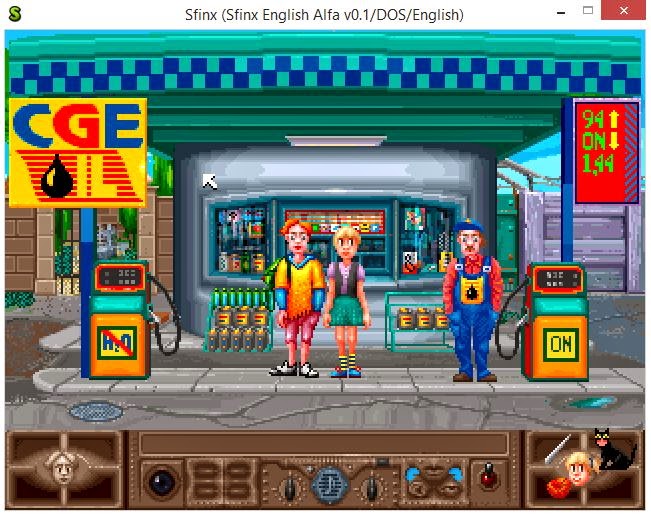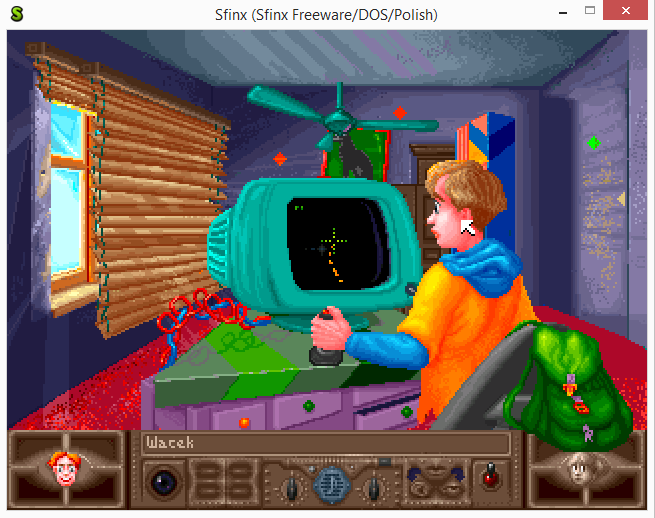Hey all! 🙂
During the last week, I spent a few days on vacation, so I haven’t really progressed much with the engine. Truth to be told, I am still on time regarding my schedule, so everything is okay.
Besides that, Arnaud progressed a great deal with the translation, and with the implementation of a few more opcodes, we were able to unlock a couple of new scenes in the game. Here are some pictures of them:


Now, if I count it correctly, we have almost 10 playable scenes of the game, most of them fully translated. That’s a quite good number if you take into account that the game has about 28 scenes in all. 🙂
Considering the advice of David (digitall), I also added a fallback detection for the English translation, so we don’t have to modify gameDescriptions[] every time Aranud comes up with a new version of the translation.
In a nutshell, it’s algorithm is very primitive: it checks for a “lang.eng” dummy file. If it finds it, the engine detects the game’s data files as the WIP English translation. Of course, it’s just a temporary solution, only used during the development. The cool thing is, it was VERY easy to implement, thanks to the great Advanced Detector what ScummVM provides. I only had to implement fallbackDetect(), and that’s all, ScummVM takes care of everything else.
We also decided that the bug in the pathfinding can wait. It’s absolutely not a showstopper, since you can interact with every sprite on the screen what needed to proceed with the game, it only blocks the player to wander around with our two heroes on certain screens. We postpone it for later, to be implemented with other rather “cosmetic” features.
This week, I am working on the save/load system, so we can test and translate the game much effectively and swiftly. Sadly, my parents are moving to a new house during these days, and I have to help them a lot, which consumes a lot of energy and time of mine. Nevertheless, I don’t fear that will slow my progress significantly
Right after that, I’ll have a pretty long list of Valgrind warnings to take care of as well. Great thanks again to David for providing me with these information, and helping me so much! 🙂
See you next time! (Hopefully with a working save/load system, and with much less memory leaks. :D)



